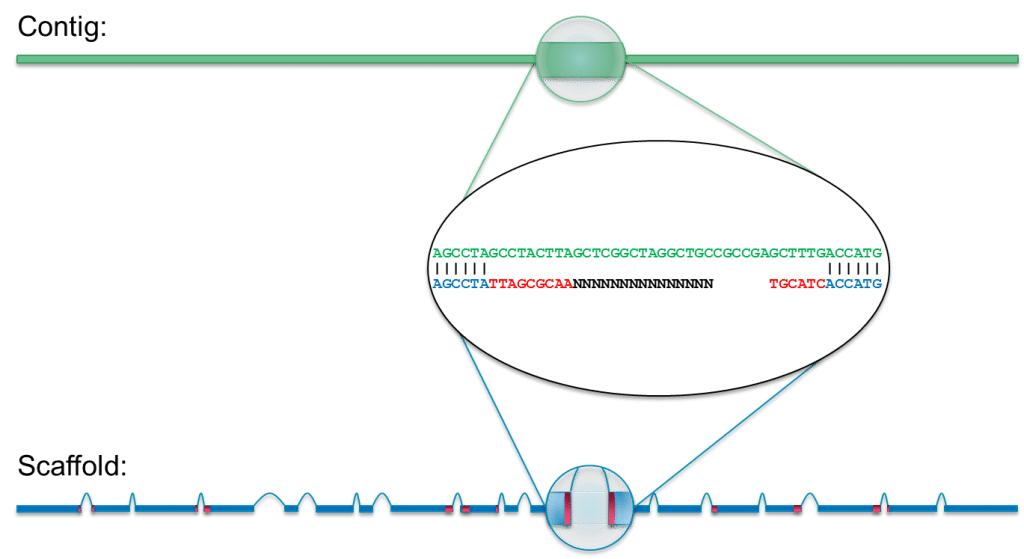To formalize the answer -
A contig is a contiguous sequence of nucleotides (A, C, G, T).
A scaffold consists of one or more contigs, typically joined by Ns which represent unknown sequence. So, for example:
This is a contig, and also a scaffold:
ACGTTGCTG
This is one scaffold, but two contigs (if you set the maximum number of Ns between contigs to be at least 4):
ACGTTNNNNGTTGTGT
This is one contig, if you decide the maximum number of consecutive Ns within a contig is 10:
ACGTTNNNNGTTGTGT
Note that the last two scaffolds are identical, but one was declared as two contigs, and the other was declared a single contig. It's a matter of definition, and up to the observer. But in general, every contig can be a scaffold; a scaffold may contain multiple contigs separated by Ns, or may be a single contig with zero or more Ns. A contig can never encompass multiple scaffolds.



A beginner's guide to eukaryotic genome annotation
some times contigs has N's
How to interpret N's in contigs
How do denovo genome/transcriptome assemblers treat ambiguous bases?
Contigs and scaffolds could actually be identical: scaffolds and contigs SPADES